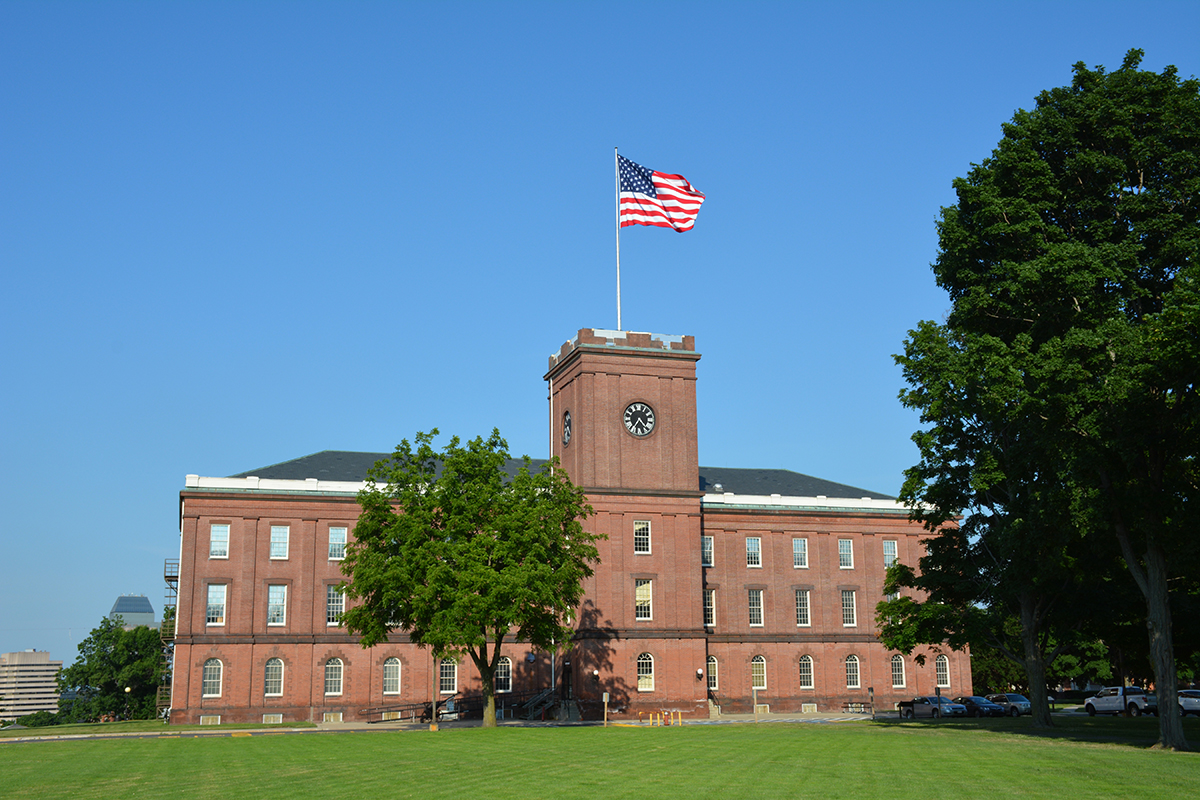Massachusetts’ National Parks and Historic Sites Are Very White

Springfield Armory NHS. / Courtesy of the NPS
The Census Bureau projects that by 2044, the U.S. will have a majority non-white population, but you’d never guess that at most National Park Service sites. From employees to visitors, our parks and historic sites cater most to one race: caucasian. This begs the question: Why? Is it awareness? Cost? Accessibility? General feelings of exclusivity? In some cases, perhaps conserving history feels like preserving “whiteness.”
Historic sites around Boston are no exception. The National Park Service permits data collection on visitor demographics only rarely (transparency, anyone?), but in 2013, three nearby historic sites received the surveys. The results are striking, though unfortunately not surprising. Salem Maritime National Historic Site (NHS) welcomes 93 percent white visitors. The number is the same for Springfield Amory NHS. And Saugus Iron Works NHS doesn’t do much better at 92 percent.
Percentages for visitors of color droop in the single digits, ranging from 3 to 6 percent for Asian and Hispanic or Latino visitors. At all three sites, the number of black visitors was so low, it was practically negligible, not reaching even 1 percent.
I reached out to the directors of these sites for comment on these striking statistics.
James Woolsey, the superintendent of the Springfield Armory, called the survey results “troubling,” especially given the large black population in the neighborhood surrounding the site and the fact that the armory was racially integrated when operational. “We recognized that we had an issue. We have been doing outreach in the community to elevate our presence,” Woolsey says. He also emphasizes that they have made a point to consider diversity when making hiring decisions, but recognizes there is further to go. “We still don’t reflect the community that we live in.”
Paul DePrey, the superintendent of Saugus Ironworks and Salem Maritime, shares that his sites are also looking into cultivating a more diverse staff, but emphasizes that he’s not just talking about race. “Diversity comes in lots of different flavors and forms.” True, but when racial diversity is the problem at hand, deflecting the conversation to other types of diversity becomes a tool to avoid the elephant in the room. Valuing a broad definition of diversity is one thing; using that definition to avoid a difficult but important conversation is another.
DePrey spoke more candidly about race when he mentioned the new research efforts he’s been involved with, including an in-depth study about the African American experience in Essex County and Northern slavery more broadly. “The first question I ask people is ‘Is you story represented here?’” DePrey says. He hopes that research efforts like this one will represent an ignored part of our history so that more of the American population will see their ancestors’ stories at national historic sites.
Reaching out to the community, diversifying the staff, and sharing the stories of historically marginalized peoples are all good first steps to ensuring that National Parks are welcoming to all races. But as we celebrate its centennial August 25, bigger institutional and social changes are needed. One hundred years of erasing people of color from the fabric of our country—and our city—is enough.
As Glenn Nelson writes in “Why Are Our Parks So White?”: “I hope the National Park Service and its partners are listening.”


